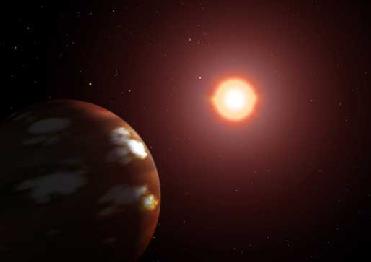
WASHINGTON, DC (BNS): "Are there Earth-like planets orbiting other stars?” Well, that is the million dollar question NASA Carl Sagan Postdoctoral Fellowship in Exoplanet Exploration will help answer.
Planets beyond our solar system, called exoplanets, are being discovered at a staggering pace, with more than 300 currently known. Decades ago, long before any exoplanets had been found, the late Carl Sagan imagined such worlds, and pioneered the scientific pursuit of life that might exist on them. Sagan was an astronomer and a highly successful science communicator.
The prestigious fellowship approximately $60,000 per year, for a period of three years was announced by NASA, in Washington, on Wednesday. Earlier this week, the Sagan Fellowship proposals were sent to the scientific community and final selections will be announced in February 2009.
The fellowship is for scientists who will inspire the next generation of explorers wishing to learn more about planets beyond the Solar System, and possibly life, around other stars. The topics of study can range from techniques for detecting the glow of a dim planet in the blinding glare of its host star, to searching for the crucial ingredients of life in other planetary systems.
Astrophysics Division director at NASA Headquarters, Jon Morse said, “We are investing in our nation's best and brightest in an emerging field that is tremendously inspiring to the public.”
It has been said that the Sagan Fellowship will join NASA's new Einstein Postdoctoral Fellowship in Physics of the Cosmos and the Hubble Postdoctoral Fellowship in Cosmic Origins. All the three fellowships represent a new theme-based approach, in which the fellows will focus on burning scientific questions, such as "Are there Earth-like planets orbiting other stars?”
Ann Druyan, Sagan's widow and collaborator, said: “NASA's science-driven mission portfolio, its cultivation of young talent to pursue cutting-edge research, and the decision to commit its genius to a question of transcendent cultural significance, would have thrilled Carl.”
Charles Beichman, executive director of NASA's Exoplanet Science Institute at the California Institute of Technology in Pasadena, which will administer the fellowship programme said that there was an explosion of interest in the field. “Now we are going down a scientific path that Carl Sagan originally blazed, torch in hand, as he led us through the dark,” Beichman said.
Commending Sagan, Neil deGrasse Tyson, astrophysicist and Frederick P Rose, director of Hayden Planetarium at American Museum of Natural History in New York, said that only a select few scientists carry the insight, vision and persistence to open entire new vistas on the cosmos. "We know about Einstein and Hubble. To this list, one can add Carl Sagan, who empowered us all, scientists as well as the public, to see planets not simply as cosmic objects but as worlds of their own that could harbour life,” Tyson and Rose said in unison.
Carl Sagan was an astronomer and a highly successful science communicator, who had ages ago, imagined life on exoplanets. Recently, NASA's Hubble and Spitzer space telescopes made historic observations of hot, Jupiter-like planets orbiting other stars. The telescopes detected methane and water in the planets' atmospheres, the same molecules that might serve as the existence of life if discovered around smaller, rocky planets in future. In a paper carried in the journal, Nature, in 1994, Sagan and colleagues used these and other molecules to identify life on a planet, Earth. Sagan and his colleagues used NASA's Galileo spacecraft to observe molecular signatures of our "pale blue dot," as the great astronomer dubbed Earth, while the spacecraft flew by.
Sagan’s favourite, NASA's Kepler mission, is set for launch in 2009 and will study hundreds of thousands of nearby stars for Earth-like worlds, some of which are likely to orbit within the star's water-friendly "habitable zone" looking for life.
 Previous Article
Previous Article













The Indian Air Force, in its flight trials evaluation report submitted before the Defence Ministry l..
view articleAn insight into the Medium Multi-Role Combat Aircraft competition...
view articleSky enthusiasts can now spot the International Space Station (ISS) commanded by Indian-American astr..
view article